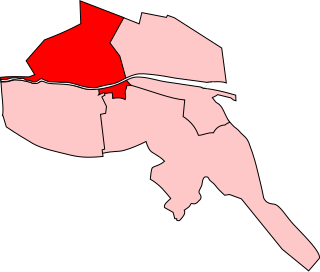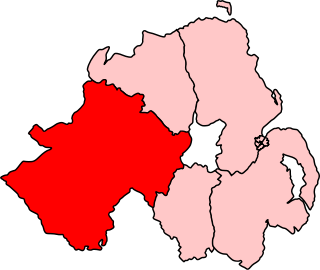
The members of the First Dáil, known as Teachtaí Dála (TDs), were the 101 Members of Parliament (MPs) returned from constituencies in Ireland at the 1918 United Kingdom general election. In its first general election, Sinn Féin won 73 seats and viewed the result as a mandate for independence; in accordance with its declared policy of abstentionism, its 69 MPs refused to attend the British House of Commons in Westminster, and established a revolutionary parliament known as Dáil Éireann. The other Irish MPs — 26 unionists and six from the Irish Parliamentary Party (IPP) — sat at Westminster and for the most part ignored the invitation to attend the Dáil. Thomas Harbison, IPP MP for North East Tyrone, did acknowledge the invitation, but "stated he should decline for obvious reasons". The Dáil met for the first time on 21 January 1919 in Mansion House in Dublin. Only 27 members attended; most of the other Sinn Féin TDs were imprisoned by the British authorities, or in hiding under threat of arrest. All 101 MPs were considered TDs, and their names were called out on the roll of membership, though there was some laughter when Irish Unionist Alliance leader Edward Carson was described as as láthair ("absent"). The database of members of the Oireachtas includes for the First Dáil only those elected for Sinn Féin.

Waterford was a parliamentary constituency in Ireland, represented in the British House of Commons.
Mid Armagh was a constituency in the Parliament of the United Kingdom. It was created by the Redistribution of Seats Act and first used at the 1885 general election. It returned one Member of Parliament (MP) until it was abolished with effect from the 1922 general election.
North Armagh was a UK Parliament constituency in Ireland which returned one Member of Parliament from 1885 to 1922, using the first past the post electoral system.
South Tyrone was a UK Parliament constituency in Ireland which returned one Member of Parliament from 1885 to 1922, using the first past the post electoral system.
North Kilkenny was a parliamentary constituency in Ireland, represented in the House of Commons of the Parliament of the United Kingdom. It returned one Member of Parliament (MP) from 1885 to 1922.
West Down was a UK Parliament constituency in Ireland which returned one Member of Parliament from 1885 to 1922, using the first past the post electoral system.
North Fermanagh was a UK Parliament constituency in Ireland which returned one Member of Parliament from 1885 to 1922, using the first past the post electoral system.
South Fermanagh was a UK Parliament constituency in Ireland.
North Londonderry was a United Kingdom Parliament constituency in Ireland.
Cromac, a division of Belfast, was a UK parliamentary constituency in Ireland. It returned one Member of Parliament (MP) to the House of Commons of the United Kingdom from 1918 to 1922, using the first past the post electoral system.
Shankill, a division of Belfast, was a UK parliamentary constituency in Northern Ireland. It returned one Member of Parliament (MP) to the House of Commons of the United Kingdom from 1918 to 1922, using the first past the post electoral system.
Victoria, a division of Belfast, was a UK parliamentary constituency in Ireland. It returned one Member of Parliament (MP) to the House of Commons of the United Kingdom from 1918 to 1922, using the first past the post electoral system.
Mid Down was a UK parliamentary constituency in Ireland. It returned one Member of Parliament (MP) to the British House of Commons from 1918 to 1922, using the first past the post electoral system.
St Michan's, a division of the parliamentary borough of Dublin, was a parliamentary constituency which returned one Member of Parliament (MP) to the House of Commons of the United Kingdom from 1918 until 1922, using the first past the post electoral system.. From 1918 to 1921, it was also used as a constituency for Dáil Éireann.

College Green, a division of the parliamentary borough of Dublin, was a parliamentary constituency which returned one Member of Parliament (MP) to the House of Commons of the United Kingdom from 1885 until 1922. From 1918 to 1921, it was also used a constituency for Dáil Éireann
North East Tyrone was a parliamentary constituency in Ireland. From 1918 to 1922 it returned one Member of Parliament (MP) to the House of Commons of the Parliament of the United Kingdom, elected by the first-past-the-post voting system.
National University of Ireland (NUI) is a university constituency in Ireland, which currently elects three senators to Seanad Éireann. Its electorate is the graduates of the university, which has a number of constituent universities. It previously elected members to the House of Commons of the United Kingdom (1918–1921), to the House of Commons of Southern Ireland (1921) and to Dáil Éireann (1918–1936).
Mid Antrim was a UK Parliament constituency in Ireland which returned one Member of Parliament from 1885 to 1922, using the first past the post electoral system.

Fermanagh and Tyrone was a county constituency of the Parliament of Northern Ireland from 1921 to 1929. It returned eight MPs, using proportional representation by means of the single transferable vote.



